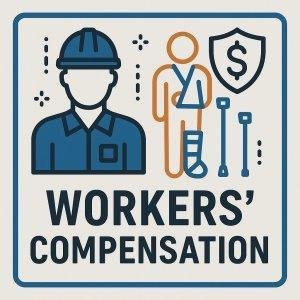
Affordable Workers’ Comp for Georgia Assisted Living Facilities—First Steps
July 27, 2025
Armed Guard Workers’ Comp Rate Benchmarks in Georgia for 2024
July 27, 2025In today’s competitive business environment,companies continuously seek innovative strategies to manage costs without compromising employee welfare. One frequently enough-overlooked area ripe for optimization is workers’ compensation insurance. Modifications to a company’s workers’ comp experience modification rate, commonly known as the mod, can yield substantial financial benefits. This article explores real-world success stories were organizations have effectively reduced their workers’ comp mods, translating directly into notable premium savings. Through detailed analysis of these cases, we highlight best practices and actionable insights that other businesses can adopt to enhance safety programs, improve claims management, and ultimately strengthen their bottom line.
Table of Contents
- Workers Compensation mod Reduction Strategies that Drive Measurable Results
- Analyzing Case Studies of Effective Mod Reduction Implementation
- Best Practices for Sustaining Reduced Workers Comp Experience Mod Ratings
- Leveraging Data Analytics to Identify Opportunities for Mod Reduction
- Q&A
- Concluding Remarks
Workers Compensation Mod Reduction Strategies that Drive Measurable Results
Implementing a targeted approach to workers’ compensation modification factor reduction hinges on strategic interventions that prioritize both safety improvements and claims management efficiencies. Companies that have succeeded typically focus on proactive injury prevention programs, ensuring compliance with OSHA standards while fostering a culture of safety awareness. In parallel, they invest in effective claims handling practices-emphasizing early reporting, swift medical care coordination, and active return-to-work policies-that directly minimize claim durations and costs, thereby contributing to a lower mod.
Key tactics employed often include:
- Data-driven risk assessments to identify high-exposure areas and roles.
- Employee engagement initiatives that promote safe behavior through training and incentives.
- Consistent collaboration with insurers and third-party administrators to optimize claim outcomes.
- Regular review and adjustment of workforce safety protocols based on real-time incident analyses.
| Strategy | Average mod Reduction | Timeframe | Impact |
|---|---|---|---|
| Enhanced Safety Training | 15% | 12 months | Reduced recordable injuries |
| Efficient Claims Management | 10% | 9 months | Lower claim costs and faster resolution |
| return-to-Work Programs | 8% | 6 months | Minimized indemnity payments |
Analyzing Case Studies of Effective Mod Reduction Implementation
By examining real-life examples,businesses can gain valuable insights into the strategic approaches that lead to significant mod reduction results. One manufacturing company, for instance, implemented targeted safety training combined with ergonomic workplace adjustments, cutting their Experience Modification Rate (EMR) by 25% within two years.Their success stemmed from consistent employee engagement and embracing technology to track incidents, allowing for proactive interventions before small issues escalated into costly claims. This case highlights how integrating data-driven safety programs and open communication fosters both a safer work environment and immediate financial benefits.
Another standout example involves a construction firm that focused on revamping their claims management process. By partnering closely with their insurer and utilizing rapid response measures post-incident, they minimized claim severity and duration. The table below summarizes the before and after impact on their mod rate and annual workers’ comp expenses:
| Metric | Before Implementation | After Implementation |
|---|---|---|
| Experience Mod Rate | 1.40 | 0.95 |
| Annual Workers’ Comp Cost | $420,000 | $290,000 |
| Average Claim Duration (days) | 60 | 25 |
- Prioritized early claim examination and return-to-work programs
- Engaged multidisciplinary teams to assess workplace hazards
- Established structured communication channels between injured workers and management
This comprehensive approach not only reduced their EMR but also enhanced their company’s reputation for caring about employee welfare-a crucial factor in attracting skilled labor in a competitive market.
Best Practices for Sustaining Reduced Workers Comp Experience Mod Ratings
Maintaining a reduced workers comp experience modification (mod) rating requires consistent focus on risk management and employee safety training. Companies that excel begin by fostering a culture of accountability, where safety protocols become second nature. This includes regular hazard assessments, prompt incident reporting, and continuous education on preventive measures. Investing in ergonomic equipment and tailored wellness programs also plays a pivotal role in reducing workplace injuries and associated claims, which directly influence the mod rate.
Equally critical is the strategic collaboration with insurance carriers and brokers to analyze loss trends and ensure accurate claim handling. Best-practice organizations implement robust return-to-work programs, allowing injured employees to ease back into the workforce, minimizing lost time. Below is a snapshot of key practices observed across prosperous businesses:
| Practice | Description | Impact |
|---|---|---|
| Proactive Safety Audits | Regular workplace evaluations identifying potential hazards | reduced claim frequency |
| Employee Engagement | Safety committees and incentive programs | Higher compliance rates |
| Data-Driven Claim Management | Analyzing claims to address root causes | Lower severity and faster resolutions |
Leveraging Data Analytics to Identify Opportunities for Mod Reduction
Data analytics has become a pivotal tool in uncovering hidden opportunities for mod reduction by transforming raw claims and workplace data into actionable insights. Through advanced algorithms and predictive modeling, businesses can pinpoint trends and high-risk areas that often go unnoticed in customary reviews. This analytical approach enables companies to tailor safety programs, optimize resource allocation, and implement targeted interventions, resulting in measurable decreases in workers’ compensation costs.
integrating data analytics also fosters continuous enhancement by enabling real-time monitoring and evaluation of implemented strategies. Key components frequently enough emphasized include:
- Claims frequency and severity analysis to identify problematic job classifications.
- Employee risk profiling to design personalized safety training.
- Return-to-work program effectiveness to accelerate recovery and reduce claim durations.
| Analytics Focus | Potential Impact on Mod | Example Outcome |
|---|---|---|
| Claims Trend Identification | 20% reduction in frequency | Early detection of slip and fall hazards |
| Risk-Based Training | 15% decrease in severity | Custom programs for high-risk roles |
| Return-to-work Optimization | 30% faster claim closure | Streamlined rehabilitation plans |
Q&A
Q&A: Workers Comp Mod Reduction Success Stories – Real-World Savings
Q1: What is a Workers Compensation Mod, and why does it matter to businesses?
A: A Workers Compensation Modification Factor (or “mod”) is a numerical depiction of a company’s workers’ compensation claims history compared to others in the same industry. A lower mod indicates fewer or less severe claims and can significantly reduce insurance premiums. For businesses, a reduced mod directly translates to substantial cost savings and improved financial health.
Q2: How can companies successfully reduce their Workers Comp mod?
A: Companies can reduce their mod by implementing comprehensive workplace safety programs, promptly addressing and managing workplace injuries, training employees on risk reduction, and working closely with insurance carriers and claims adjusters. Effective return-to-work programs and proactive claims management also play critical roles.
Q3: Can you share any real-world examples of companies that have successfully lowered their Workers Comp mod?
A: Yes. For instance, a mid-sized construction company reduced its mod by 25% within two years by setting up a safety committee, conducting regular site inspections, and providing targeted safety training. This resulted in a premium reduction of over $100,000 annually. Another example is a manufacturing firm that implemented a modified duty program allowing injured workers to return to work in limited roles, reducing claim duration and lowering their mod by 18%.
Q4: What are the key benefits companies experience by reducing their Workers Comp mod?
A: beyond direct premium savings,companies benefit from improved workplace morale,reduced injury rates,better employee retention,and a stronger reputation for safety.Financially, lower comp costs free up capital for other business investments, boosting overall competitiveness.
Q5: How long does it typically take to see measurable mod reductions?
A: Workers Compensation mods are calculated annually, so measurable improvements generally begin to appear within one to three years of sustained safety and claims management efforts. Consistency and commitment are crucial for lasting results.
Q6: Are there any common pitfalls businesses shoudl avoid when aiming to reduce their Workers Comp mod?
A: Common missteps include neglecting accurate claims reporting, failing to engage leadership in safety initiatives, and overlooking return-to-work opportunities. Additionally, some companies attempt swift fixes rather than cultivating a safety-first culture, which limits long-term mod improvements.
Q7: how can businesses effectively track their progress toward mod reduction?
A: Businesses should monitor claim frequency and severity metrics, regularly review their Experience Modification Reports, and work closely with their insurance carriers or brokers for insights. Implementing key performance indicators (KPIs) related to safety and claims management helps track progress and adjust strategies proactively.
This Q&A provides a concise overview of effective strategies and tangible outcomes for businesses focused on lowering their Workers Compensation mod and achieving real-world savings.
Concluding Remarks
the real-world success stories of workers’ compensation modification (mod) reduction underscore the tangible value of proactive risk management and strategic safety initiatives. Organizations that prioritize comprehensive claims analysis, targeted injury prevention programs, and effective return-to-work policies not only enhance employee well-being but also realize significant financial savings. As these case studies demonstrate, a focused approach to mod reduction can drive lasting cost containment and improve overall operational efficiency. Businesses seeking to optimize their workers’ compensation experience would benefit from adopting similar best practices, positioning themselves for long-term success in an increasingly competitive marketplace.
“This content was generated with the assistance of artificial intelligence. While we strive for accuracy, AI-generated content may not always reflect the most current information or professional advice. Users are encouraged to independently verify critical information and, where appropriate, consult with qualified professionals, lawyers, state statutes and regulations & NCCI rules & manuals before making decisions based on this content.






